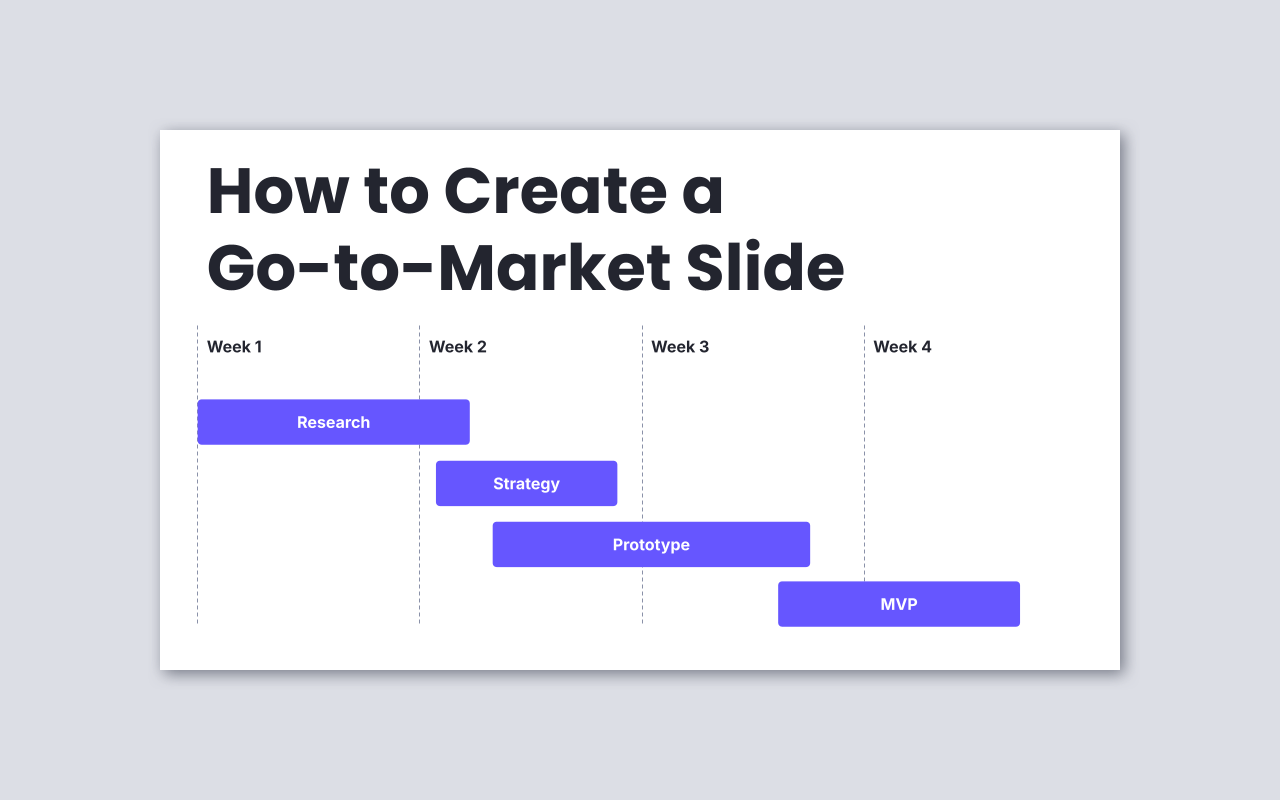How to Create a Go-to-Market Slide for Your Pitch Deck
A go-to-market slide is key to your pitch deck. Master your marketing strategy, target audience, and growth plan to wow investors and win their confidence.

Ever wonder why so many startups mess up their go-to-market strategy? It’s like baking a cake without checking if you have sugar. Looks good on paper but tastes… well, not so great! The go-to-market slide in your pitch deck is your chance to show investors you actually know how to get your product into customers’ hands. It’s not just a list of marketing buzzwords; it’s the roadmap that grabs attention and keeps your audience hooked. Nail this slide, and you’ll have them leaning in, eager to hear more. Ready to dive into what makes a go-to-market slide truly shine? Let’s go!
Why is the Go-to-Market Slide Important
Your go-to-market slide is basically your startup’s GPS for growth. It’s where you map out the most efficient and impactful ways to acquire customers and grow your market share. Investors want to see a clear, focused marketing strategy that shows you’ve thought through how to reach your audience, distribute your product, and scale up smoothly. Without this, your pitch deck feels like a great idea without a plan and that’s a no-go in the startup world.

How to Create a Go-to-Market Slide
Define Your Target Audience and Market Segmentation
Start by painting a clear picture of your ideal customer profile (ICP). Who are they? What do they do? What keeps them up at night? Include details like demographics, user behavior, pain points, and location. If your market is broad, break it down into smaller segments. This way, you can tailor your marketing strategy to speak directly to each group, making your message way more effective.
Outline Your Customer Acquisition and Growth Strategy
Next, explain how you’ll get customers knocking on your door. What marketing and sales channels will you use? Think social media, partnerships, events, or even good old-fashioned word of mouth. Don’t forget to include key metrics like customer acquisition cost (CAC) and how you plan to reduce it over time. Show investors you have a plan not just to attract customers but to grow sustainably.
Ensure GTM Strategy is Consistent with Business Model
Your go-to-market strategy needs to be in sync with your business model. That means your sales channels, pricing, messaging, and product features should all align with your target audience’s needs and your company’s goals. If your GTM plan feels disconnected from your business model or team capabilities, investors will spot it—and it won’t be a good look. Consistency here builds trust and shows you’re ready to execute.
"If you’re already confident you can build a product, you can focus on picking a big market and nailing the pain point, the brand, messaging, content, ads, emails and sales model needed to reach that market." as Stefan Groschupf once said on 10 Go-To-Market (GTM) Strategy Examples and Templates. Once you’re confident in your product, the real challenge and opportunity is mastering the go-to-market strategy by targeting the right market and perfectly aligning your messaging and sales approach.
Mistakes to Avoid
Avoid Listing Marketing Channels Without Clear Strategy
Simply naming marketing channels without explaining how they fit into your overall plan makes your slide look unfocused and unconvincing.
- Bad example: “We’ll use Facebook, Instagram, Twitter, and email marketing.” (No clue how or why!)
- Good example: “We’ll target young professionals on Instagram with influencer partnerships and use email campaigns to nurture leads, focusing on conversion within 30 days.”
Don’t Omit Key Metrics Like CAC and LTV
Leaving out important metrics like Customer Acquisition Cost (CAC) and Lifetime Value (LTV) weakens your credibility and leaves investors guessing about your financials.
- Bad example: “We plan to acquire customers through ads.” (No numbers, no credibility.)
- Good example: “Our current CAC is $25, and our customer lifetime value (LTV) is $150, showing strong profitability as we scale.”
Ensure Alignment Between GTM Strategy, Pricing, and Team Capabilities
If your go-to-market strategy doesn’t match your pricing model or team’s skills, it signals poor planning and execution risks to investors.
- Bad example: “Our GTM relies heavily on direct sales, but we only have a marketing intern and no sales team.” (Mismatch alert!)
- Good example: “We’ll leverage a digital-first approach with our experienced marketing team, complemented by a small but skilled sales force targeting enterprise clients.”
Frequently Asked Questions
What does a Go-to-Market (GTM) slide need?
Outline your customer acquisition strategy, marketing channels, partnerships, and planned timeline for launch and scaling.
How detailed should I be with GTM plans?
Clearly link your plan to your business model and resources. Don’t promise traction you can’t support use realistic, stage-appropriate milestones.
Can I show proof of GTM success?
If you have early customer wins, pilot results, or acquisition metrics, include those to demonstrate that your plan is already working or primed for success.
The Short of It
Your go-to-market slide is essential because a strong go-to-market strategy shows investors you have a clear, actionable plan to reach customers and grow your business. This matters because without a smart strategy, even the best products can struggle to gain traction. When you define your target audience clearly, outline how you’ll acquire customers with key metrics, and make sure everything fits your business model, you build confidence and credibility. You want your pitch deck to tell a story that investors can believe in. If you’re ready to create a slide that truly highlights your growth plan, why not start with our professional pitch deck template? It’s designed to help you make that story easy and compelling.

Get a Professional Pitch Deck and Tell Compelling Stories
✓ Unique layouts ✓ Editable elements ✓ Free vector icons ✓ Compatible with Google Slides
Download now →